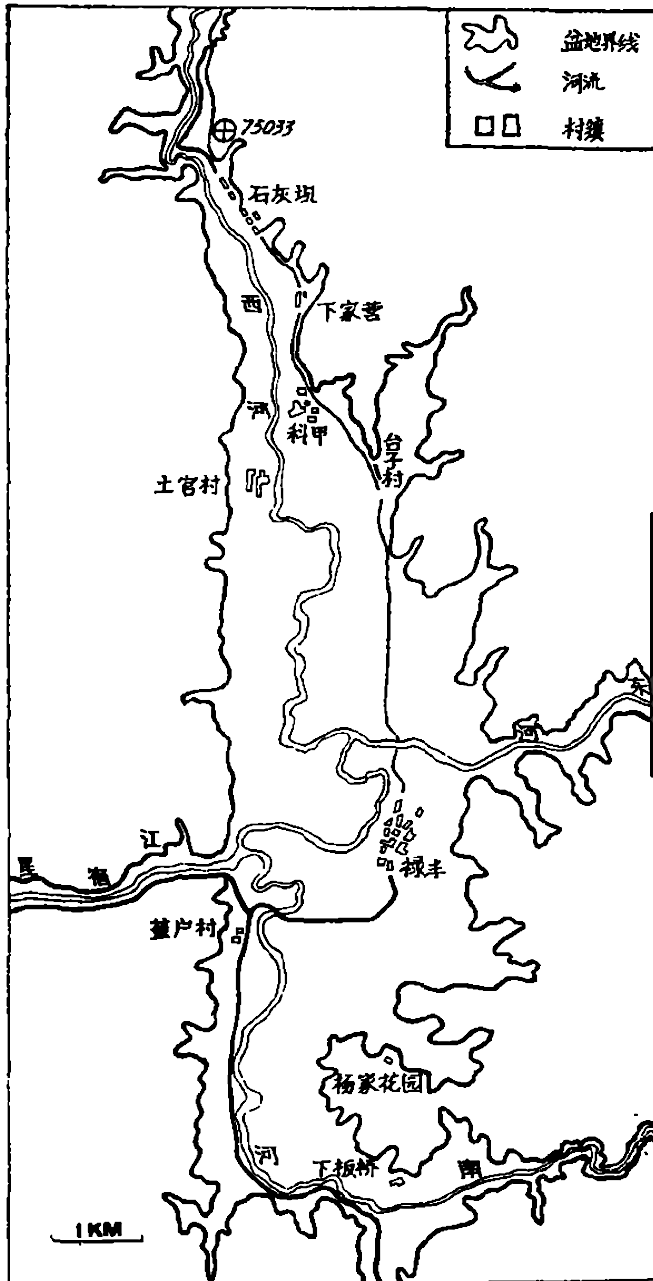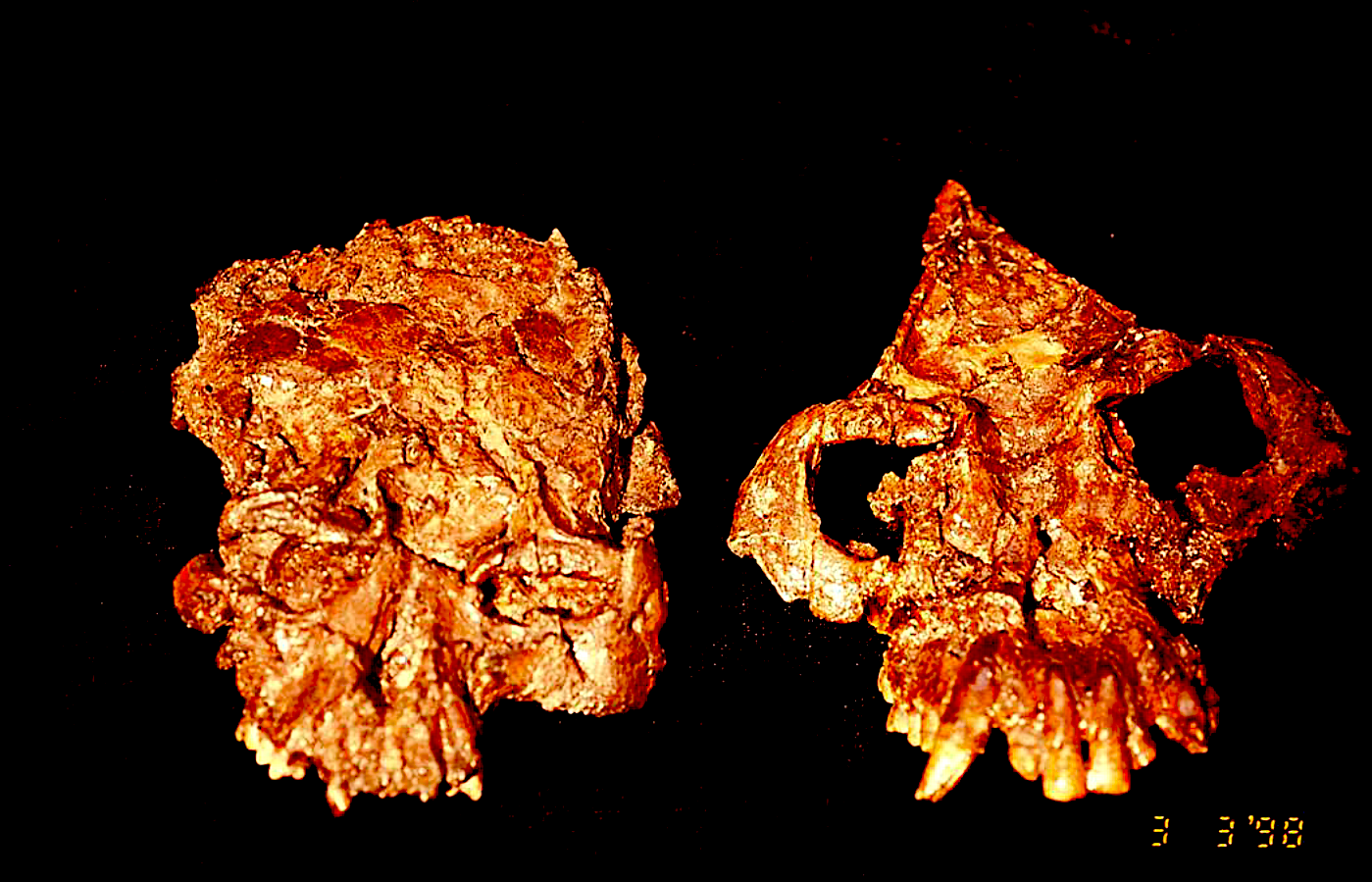Shihuiba Fm
Type Locality and Naming
The naming section is located on a slope (named Miaoshanpo in Chinese) (N25°13'15", E102°3'9") of Shihuiba Village, Lufeng County, Yunnan (Xu and Lu, 2008). Named by Zhang Xingyong et al. in 1981.
[Figure: The Shihuiba and other localities with the Shihuiba Formation in the Lufeng Basin (Qi, 1985).]
Lithology and Thickness
The formation is divided into three members: First member, gray sand and conglomerate with thin-bedded or lenticular clay; Second member, red and gray clay, the lower part of which contains more angular fragments; Third member, alternating beds of blackish gray and grayish white clay and lignite. The thickness is 29 m.
[Figure: The excavation of Shihuiba Formation in Lufeng Basin, Yunnan (By courtesy of Ji Xueping).]
Relationships and Distribution
Lower contact
The base of the formation is marked by appearance of gray conglomerate, which separates this formation from grayish green and grayish yellow phyllite and slate and dark gray crystalline limestone and dolomite. It is unconformably underlain by the Yimen Fm of Kunyang Gr.
Upper contact
It is unconformably overlying on the yellow fine sandstone of the Miaoshanpo Fm. [Strat diagram implies it is underlying the Miaoshanpo Fm, as does that formation description.]
Regional extent
This formation is found in both Lufeng Basin and Zhongcun Basin, Yunnan. The lithology is not quite uniform and the thickness is highly varied. In both the Lufeng and Zhongcun basins only the basin margin is exposed; at Taizi Village only deposits (5 m thick) of the second member of the formation are exposed; at Tuguan Village there outcrop strata (2.5 m) equivalent to the third member of the formation; at Yangjiahuayuan the strata exposed are thicker (>100 m), mainly represented by sand, conglomerate, clay and thin lignite beds of the first member; at Zhongcun Village the third member is dominant (>10 m).
GeoJSON
Fossils
At section D of Shihuiba, there are abundant fossils, such as plants, sporopollen, gastropods, bivalves, fishes, reptiles, birds and mammals. Fossil mammals include more than one hundred species such as Lufengpithecus lufengensis, Accopithecus robustus, Anourosorex oblongus, Brachyrhizomys nagrii, Hylopetodon dianense, Miopetaurista asiatica, Hystrix lufengensis, Dremomys primitivus, Ailurarctos lufengensis, Progonomys yunnanensis, Tapirus yunnanensis, Hipparion lufengense, Acerorhinus lufengensis, Anisodon yuanmouensis, and Lophochoerus lufengensis (Xu and Lu, 2008).
In the Neogene of South China, the mammal fossils contained in this formation are most abundant and include the most types, especially the famous Homo Lufengpithecus lufengensis and many types of fossil primates. Therefore, the formation is an important horizon for the study of Neogene mammals, especially ancient primates. In addition, similar fossil mammals are found in some other small lignite-bearing basins in Yunnan. The relationship of these deposits to the Shihuiba Formation remains to be further studied.
[Figure: Fossils of Lufengpithecus from Lufeng Basin (By courtesy of Ji Xueping).
Age
Depositional setting
This formation is mainly fluvial-lacustrine-swampy deposits. Some people think that its base may represent alluvial and diluvial deposits formed in the piedmont zone on the water basin margin at the initial stage.
Additional Information


